The debate on Radial Arm Saws seems to go on forever. I'm in the "For" category. To help those who may be 'on the fence' make up their minds and to perhaps, persuade those in the "Against" category to look again, here is a look at my RAS set-up. It was developed primarily with safety in mind but also convenience.
Firstly, there is the table itself, which in my case, is not sacrificial:
It is made from melamine-faced particleboard; for ease of cleaning and for slipperiness.
Next comes a sideways sliding table (x direction, that is) made from the same material. This might seem a strange idea with and RAS but, read on. The table is constructed in a way that it hooks over or straddles the rear fence of the original table in a way that prevents slop:

Kerf lines are visible on the auxiliary table in the photo from previous ripping operations; the auxiliary table is sacrificial.
The back fence of this auxiliary table is designed to be exactly parallel with the original table's fence. Examination of the photographs will show that the are three clamping devices which hold down the work piece firmly when cross cutting or ripping. Another important feature of the auxiliary table is a pin which automatically drops into a corresponding hole in the original table's fence when aligned, thus, locking the auxiliary table into place when cross-cutting for example.
The following photo shows a board of walnut ready to be cross-cut to length. It is clamped in position. A stop arrangement to the right ensures that repeat cuts will be exactly the same. The auxiliary table's lock pin is in the down position, so everything is solid. The cut can be made safely and cleanly with no hands or thumbs needing to be near the blade. In fact, the cut cut could be made with just one hand operating the saw.
The next photo shows the set-up for a rip cut; here it is set up for trimming the edge of a board. It could just as easy be for straightening a board, ripping down the middle or be even set up to cut tapers.
Here's a view looking towards the blade:
And finally, after the cut; the sliding table has been moved from left to right and the operator didn't need to stand in the line of fire of the blade. All done from the front of the table.
Now you can see why I wanted to use a melamine faced board for the tables as it slides relatively easily.
The set-up described above is also great for cutting medium to small sized sheet materials. The next photo shows a plywood square panel being cut to size. Cutting a panel like this is basically like doing long cross-cuts.
And now a nice little jig that simply clamps straight onto the auxiliary table. Can you see what it is? It may come as a surprise to know that it is actually a circle-cutting jig; and one that works remarkably well. How, you might ask, does one cut a circle on a RAS?
Well, the principle is very simple: keep cutting the corners off a square shape, again and again. and you will end up with a circle. Believe it or not, from set-up to finished circle only takes a few minutes.
The following sequence of photos show the setting up and cutting process:
First setting the jig for a 14" dia. circle.
Now, see the knob on the left that tightens up the setting on the jig:
Now, imagine the square of plywood we cut earlier; we find its centre-point and drill an appropriately sized hole and drop it over the pin on the jig. Now, we simply hold it firmly in place and cut off the first corner; just as if we were doing a regular cross-cut.
The photo above shows the first corner cut off. It is now only a matter of rotating the plywood 90 degrees and cutting of the next corner and so on. When all four corners are cut off, we start on the next lot of smaller corners until we end up with what we see in the next photos:
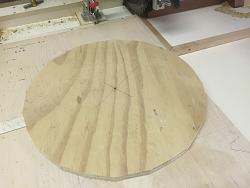
,
A near-perfect circle and a little pile of debris.
All that is left now is to set the blade at the appropriate position along the arm and turn the disc-shaped plywood into the blade to trim off the hairs:
.
Of course, a Radial Arm Saw is capable of doing all sorts of unusual jobs but I will cover just one more of the common tasks that I use the RAS for; cutting mitres (perhaps 'miters' where you are). Again, this requires the simplest of jigs clamped down onto the auxiliary table. A fence fixed at the required angle to a piece of MDF :
The final photos show a mitre (miter) after being nipped off the end of a piece of plywood and the cut being checked against a 45 degree square. Looks pretty accurate to me!
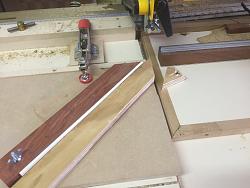
To conclude; I designed this set-up primarily with safety in mind. Secondly with accuracy and thirdly with convenience in mind. I hope it will persuade some of the Naysayers that the RAS is not so bad after all. Indeed, it is pretty well the mainstay of my shop. Few projects take place without some recourse to my RAS. Moreover, it is no more dangerous than any other machine if treated with respect. It is also no less forgiving. Note that all machines are dangerous. Even hand tools can be deadly if incorrectly used. The system described here works for me, it may not work for you. You are responsible for your own safety. Your shop, your machines, your methods etc. will undoubtedly differ from mine. So, whatever you do, think about the safety aspect of it and stay safe.
For more details about this project, including notes on safety, visit my blog.



 LinkBack URL
LinkBack URL About LinkBacks
About LinkBacks
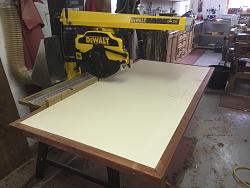
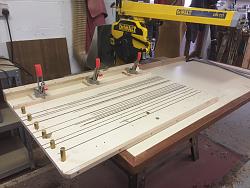
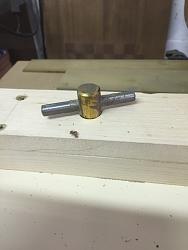
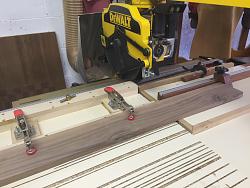
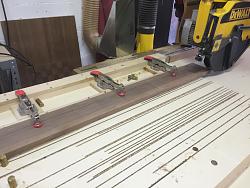
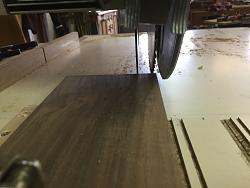
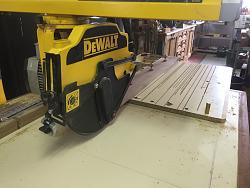
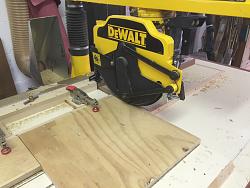
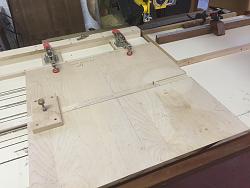
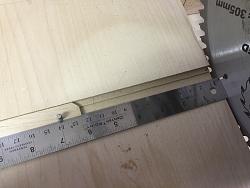
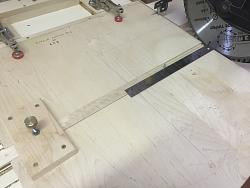
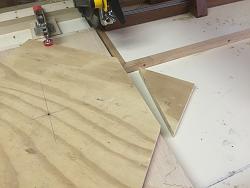
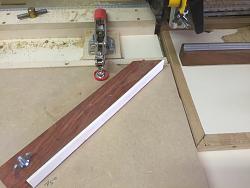
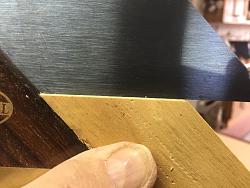


 Reply With Quote
Reply With Quote
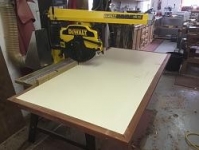

Bookmarks